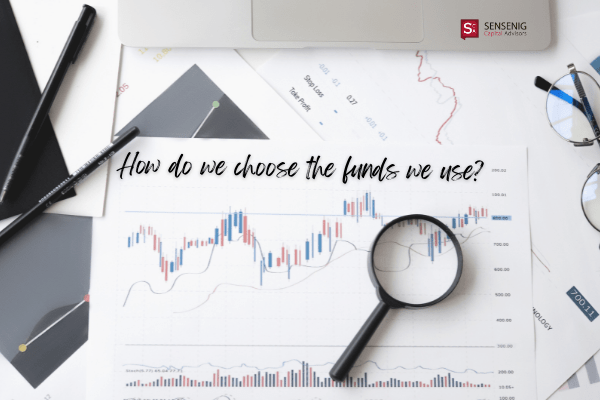In 1999, James Glassman co-authored a book entitled Dow 36,000 that, as he says, became a notorious symbol for bullishness about the stock market. Some of you may recall that title, provocative as it was at the time. Recently writing an article in the February 24, 2011 issue of The Wall Street Journal titled “Why I Was Wrong About Dow 36,000,” he provides a number of reasons why he now feels the book’s prediction was incorrect.
According to Glassman, the first major change is the decline in the United States’ relative economic standing. The Congressional Budget Office estimates that U.S. growth will average far less over the next 70 years than it has during the second half of the 20th century. Meanwhile, developing nations like Brazil, India, and China are growing considerably faster than the U.S.
Glassman notes the second big change involves risk, as defined by the volatility of an asset’s price. While equities have returned a yearly average of roughly 10%, their actual returns can fluctuate considerably year-to-year. We know this all too well as we consider the returns of the S&P500 during just the past four years through December 2010: 5.5%, -37%, 26.5%, and 15.1%, respectively. But he also mentions another kind of risk that we really cannot measure or expect; this is illustrated by, 9/11, the “flash crash,” or the plummet of home values in the U.S., coupled with market volatility created by instantaneous connections via technology and the global markets.
Of course there have been numerous disasters over the years with short-term effects on the markets: the first World Trade Center bombing, Persian Gulf War, JFK assassination, major hurricanes, Vietnam/Korean/World Wars, and while the short-term market impact has been minimal so far, the recent catastrophe in Japan. These are sometimes referred to as sociopolitical risks. And while Glassman admits his potential fallibility regarding the world being a riskier place today, he still feels investors should proceed with caution.
The Importance of Considering Risk
Suffice it to say, Sensenig Capital Advisors does not make predictions about where the market will stand at any given point in the future. But we do agree that in both good times and bad, it is important to exercise caution, taking on only a level of risk that is realistically tolerable. Recognizing the many differences between investors – and certainly those of our own clients – there is obviously no set right or wrong answer as to one’s tolerance for risk or the associated allocation of asset classes. To this end, it might be helpful to take a closer look at risk and risk tolerance to gain a better handle on what they mean to us as individual investors.
Understanding your level of risk tolerance is critical and should be assessed before you place your hard earned savings into an investment portfolio. Our firm feels it is also essential for experienced investors to revisit their risk tolerance criteria from time to time, primarily as important life events or changes arise that could affect their financial goals and objectives. Accordingly, the level of investment risk that an investor can tolerate is usually related to his or her time horizon. A longer time horizon generally enables higher risk tolerance as it allows for short term losses to recover as well as the realization of long term gains.
While there are numerous other issues to consider when assessing risk tolerance, one integral factor we must mention is discipline. As investment advisors, we cannot decide on an investor’s own time horizon, but we do work at helping our clients maintain their discipline through the economic peaks and valleys, inevitable as they are.
Types of Risk
Below are some common sources of investment risk paired with strategies you can use to help reduce those risks. At Sensenig Capital, we strive to make certain our clients’ investment plans adequately address these issues. Once you know which kind of risk you want to minimize, you are better able to choose the right investments for your situation. We invite you to look over the list to see which ones might be your most sensitive (click to enlarge):
Although you cannot eliminate risk, you can control the type and level of risk to which you are exposed through your choice of investments and diversification. If, however, your investment risk tolerance is set too low, you will not generate the necessary returns, causing you to fall short of your goals. If it is set too high, without proper guidance, some might sell their investments and miss out on superior long-term returns when market conditions become difficult. Setting your risk tolerance and subsequently aligning your portfolio allows you to reduce its volatility to a level with which you can live for the long-term.
Risk and Behavior
The business of assessing risk is vital to investment professionals, especially as we consider how people make their tolerance decisions. In 1979, psychologists Amos Tversky and Daniel Kahneman published an article in Econometrica titled, “Prospect Theory: An Analysis of Decision Making under Risk.” They documented through research that the pain of loss is far more significant to people than the satisfaction of gain, by a factor of 2½ to 1. Making a decision when the outcome is uncertain, people will choose the option they think has the best chance of not losing. Psychologists call this “loss aversion,” and it goes a long way toward explaining the sometimes perplexing decisions of investors.
Many years ago this relationship between psychology and investing gave birth to a field of study known as behavioral finance. Accordingly, research has shown that a common response among investors is to overreact to bad news while reacting too slowly to good news. Robert Hagstrom, author of the book Lattice Work – The New Investing, states that making unreasonable extrapolations from a few bits of negative information is known as “overreaction bias,” and it has led more than one advisor to suggest – not altogether in jest – that most investors would be better off if they never opened their monthly statements.
We tend to agree that these biases do appear to be rather common among many investors today and, as a result, are worthy of consideration when determining your tolerance for risk. A better understanding of this association of risk tolerance and the make-up of your investment portfolio will have a significant impact on your performance returns over the long-term.




